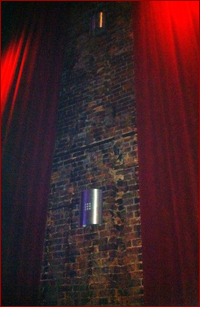October 2011: For The Record
Words: Dan Kamys
For The Record
 Jennifer Morrell
Editor
jmorrell@lionhrtpub.com
Jennifer Morrell
Editor
jmorrell@lionhrtpub.com
Most college campuses and towns have notable landmarks. Whether a building, a statue, an archway or even a tree, these places trademark where kids and alumni go to enrich their lives. They become engrained in us, therefore, holding special memories, meaning and places in our hearts. As a University of Georgia alumnus, I have a rich list of places and things that are burned in my memory: the Chapel Bell, the Arches, and that patch of land Between the Hedges.
So, in June 2009, when the Georgia Theatre in downtown Athens, Ga., suffered a massive fire, hundreds of thousands of hearts were broken, mine included. Having watched countless concerts, movies and other events in the then 74-year-old historic landmark, I had difficulty grasping the idea of a fire-gutted building with no roof where our beloved “Theatre” used to be.
From the beginning, the overwhelming attitude was to charge forward and rebuild. Donations came in, and money was put into place to rebuild the theater, perhaps, to an improved and better state than before. In August, I attended one of the re-opening concerts and experienced a firsthand view of the rebuilt theater.
Chris Robinson, lead singer of The Black Crowes, was performing with a new band he has formed, The Chris Robinson Brotherhood. We drove from Atlanta in high anticipation of the new band, but moreover, the new building.
 When we entered, it smelled different, it looked somewhat different, but still, it felt the same. What was it? The old, beaten-up hardwoods were shiny, and the previously less-than-desirable bathroom facilities now boasted fancy countertops and several stalls. All of this fresh, pristine, gorgeous interior was in place, following a fire that should have wiped away all traces of our history in that venue. But somehow, it still felt like the Theatre. Our Theatre.
When we entered, it smelled different, it looked somewhat different, but still, it felt the same. What was it? The old, beaten-up hardwoods were shiny, and the previously less-than-desirable bathroom facilities now boasted fancy countertops and several stalls. All of this fresh, pristine, gorgeous interior was in place, following a fire that should have wiped away all traces of our history in that venue. But somehow, it still felt like the Theatre. Our Theatre.
As we walked through the lobby and claimed our spaces in the crowd, awaiting the start of the show, it hit me like a ton of bricks: The walls were the same – the same dignified, towering brick walls, floor to ceiling. The bricks had not perished; they had survived, and they were intact. Draped with red curtains and dimly lit, the brick walls stood proudly like the keepers of all our old secrets. I stared at it for a bit. The skeleton of this venue had lived on, because of its endurance, and because it was made of masonry.
I am so proud to work in an industry that promotes the use of such a strong, sustainable, durable and resilient material. Seeing that wall and realizing it was the original wall made me – and, I’m sure, many others – feel as though the past is still wrapped around our new Georgia Theatre.
My hat goes off to those involved in rebuilding the venue that has meant so much to so many. And though still charred, the brick walls remain to soak in new centuries of music and entertainment in our “Classic City,” Athens. Go Dawgs!
Return to Table of Contents